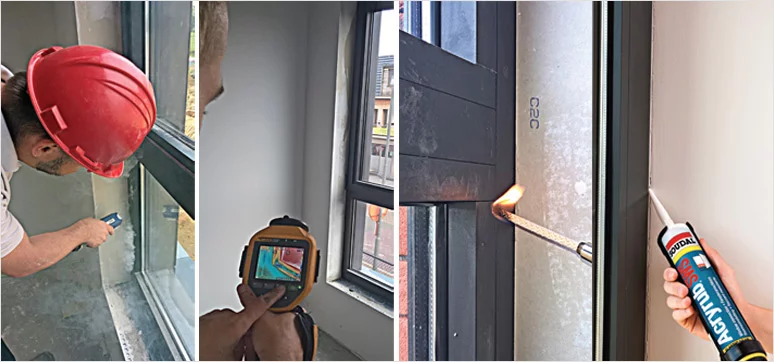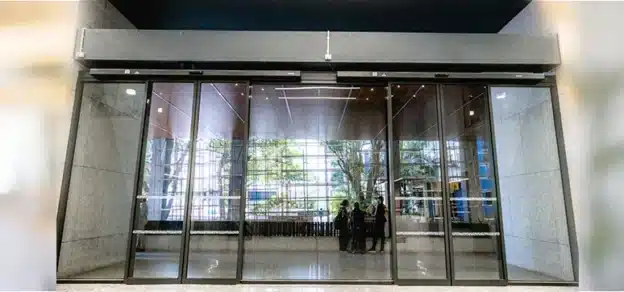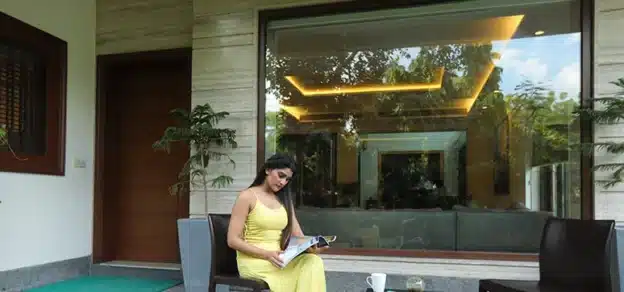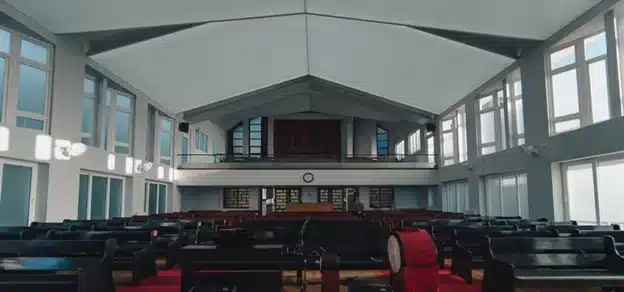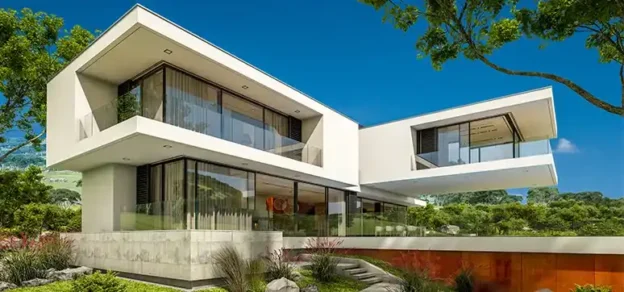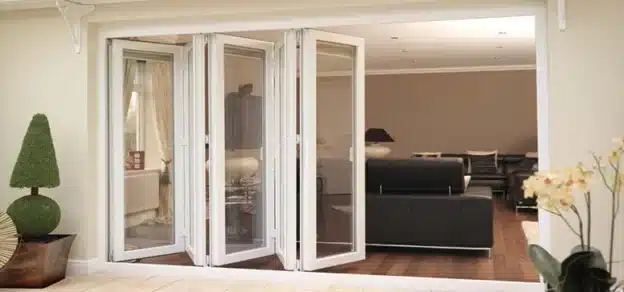One of the major new challenges in modern construction is the energy performance of the building. As major components of the so important building envelope, windows play a major roll here, but let’s not forget the joints and connections between those windows and the construction…
Energy concerns and legislation have pushed the construction world in high tempo towards new construction materials and has dramatically impacted all components of the building envelope. Uf, Ug and Uw have suddenly become major USP’s, but what’s the point in ‘throwing’ these highly efficient new generation windows in to the wall just like that? In order to meet all these new challenges, care for detail is needed more than ever, so let’s have a look at some points of interest.
Remark:
We will not consider the mechanical fixing of the window here, as this would extend the scope of this article too much, although admittedly this aspect was impacted the same way: in the quest for highly modern and energy efficient glazing solutions,windows have become bigger and heavier (triple glazing).
Window installation should be tackled on three levels: outside, inside and centre.
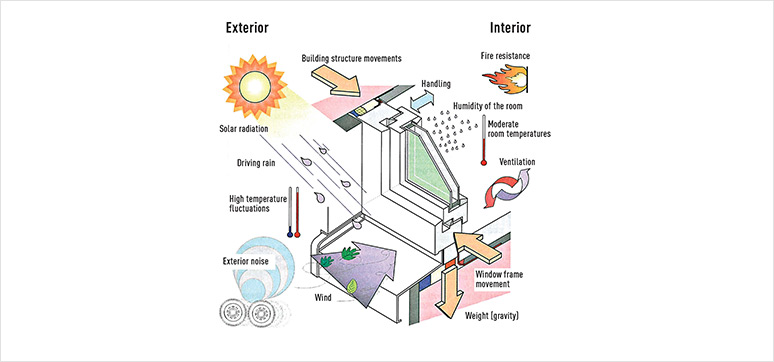
Keeping the Water Out
The first concern is, of course, to keep the water out. Nothing new here, but the solutions available have evolved. One has to bear in mind that these products do not just have to be watertight, they have to be driving rain tight which means they will keep the water out at (wind) pressures up to 600 Pascal or more. Also critical is the tablet area where water can collect and possibly will form standing water, exposing materials to more moisture than a few drops of rain.
In case of ventilated façade systems, the newer non-woven membranes can combine that water tightness (often tested according to EN1027) with a certain degree of water vapour permeability, allowing moisture trapped with in the joint to evaporate to the outside rather than to the inside.
Sd-values of around 0.05m are typical for these products. In higher constructions (over 50m), EPDM (Ethylene Propylene Diene Monomer) membranes would be a better option, provided they are properly bonded to the – often concrete – structure. Although they will probably have higher Sd values (so more vapour tight), they will provide better protection against the elements.
In more traditional dwellings, sealants and precompressed tapes can offer good weather ability. If available on the packaging of a sealant, please refer to the CE marking to identify the right sealant for this application. If used between the frame and wall, go for the F-rated sealants; F = Façade. Better sealants have movement capacities of up to 20 or 25 per cent. Best quality is thus rated F-EXT-25LM (EXT = exterior5 use). Premium quality might be provided with a quality label such as RAL. Interesting technology here are the ‘hybrid’ sealants, which combine high movement capacity with advantages such as: non-staining on natural stone, adhesion to slightly damp surfaces, no smell, good tool ability and excellent weather ability.
Newest evolution, as seen on the Bau Munich Exhibition, are hybrid based liquid flashing products that can be sprayed or brushed on, to form an elastic and watertight coating on almost any substrate. These products are easy to use and thus lower the threshold in comparison to the now-woven membranes.
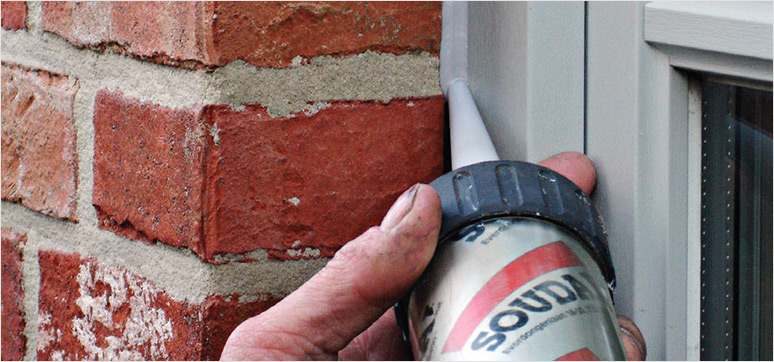
Keeping the Air Inside: Airtightness
EUROPE- race towards NZEB!
With directive 2002/91/EC, the so called Energy Performance of Buildings Directive or EPBD, Europe heralded the quest for more energy efficient buildings, based on their “20-20-20 policy”: to reduce CO2 gas emissions by 20 per cent, to reduce energy consumption by 20 per cent and to increase the share of renewable energy to 20 per cent (reference year: 1990). The recast of that energy performance directive (2010/31/EC) included not only stricter requirements for new buildings and renovations and a stronger role for the energy performance certificate, but also the introduction of the NZEB (Nearly Zero Energy Building) concept. The definition in the recast:
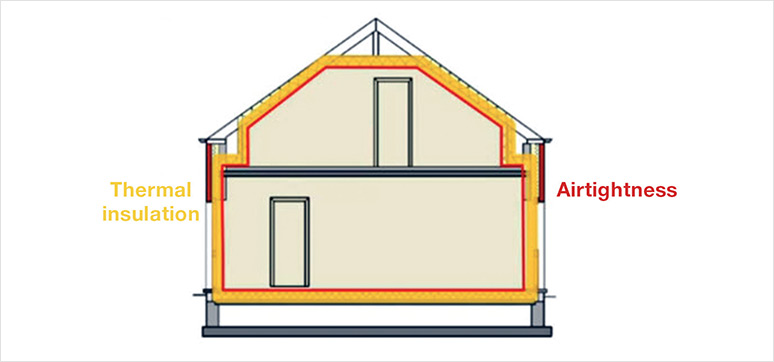
A building envelope with a very high energy performance, as set out in Appendix I. The nearly zero or very low amount of energy required should be covered to a very signifi cant extent by energy from renewable sources, including energy from renewable sources produced on-site or nearby.
As from 2021, this will be the standard for all newly built houses in the whole of Europe!
Passive House
The early 1990’s saw an alternative and voluntary route towards very energy efficient houses in Germany: Passive House. The concept based on the Trias Energetica:
- Prevention: limit energy consumption by avoidingwaste.
- Use sustainable sources of energy as much as possible.
- Use fossil fuels as efficiently as possible to meet the remaining energy needs.
With an n-50 value (air exchange rate) Passive House has set very high standards not only for for the overall efficiency, but especially for the level airtightness.
Airtightness
So airtightness is key in both these approaches. It is quite logical as uncontrolled ventilation losses are the reason for quite a lot of heat loss, draft, poor acoustics and damp or moisture problems. Good airtightness and a high quality building envelope go hand in hand. Furthermore, good airtightness is one of the most economical ways to improve the energy performance of a building.
On site, air tightness is quite easily tested using the so called ‘Blower Door test’, which is also regulated by European standard EN13829 (method A or B) and more recently by an International Standard (ISO 9972). The result of the measurement is a leak flow (m3³/h) at a pressure difference of 50 Pa under-pressure and over pressure between the inside and outside. In order to achieve accurate measurements, many countries have implemented a quality framework for testers.
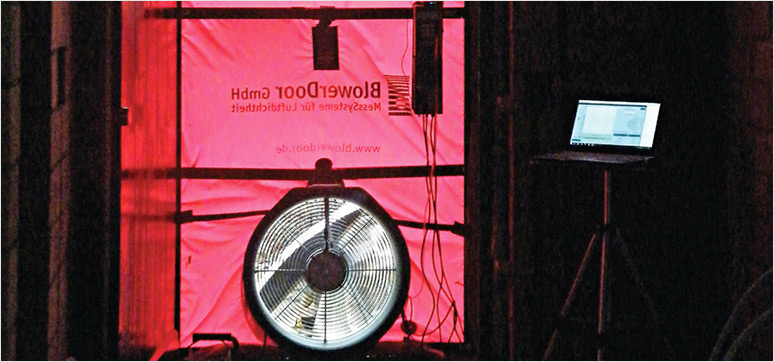
Air tightness of windows is tested according to standard EN1026 (lab conditions), that of other construction materials such as window installation products according to EN12114; the result is a value indicating the leak flow per running m or Sq m (per hour). In practice windows (including their installation), on average, account for 35-40 per cent of the total air loss in a standard detached house; window-to-wall joints alone are of crucial importance; poor execution accounts for an estimated 15 per cent.
The air tightness barrier is located on the warm side of the building envelope, so on the inside. To make window to wall connections airtight, one can rely on sealants; preferably quality products rated F again, either INT or EXT. Movement capacities may be a bit lower, but preferably 12.5 per cent or more. Acrylics are easy to tool and very airtight, but beware of poor quality, if you need higher levels of air tightness. In that case, a combination with non-woven membranes is the better option; they come in various widths (70-100-150 mm) and can be plastered or finished, otherwise afterwards. In general, they will also prevent moisture to migrate into the joint, as they usually boast Sd values of 10 m or more.
Latest evolution’s here are the water-based or hybrid based liquid flashing products, which can be sprayed or brushed on; main advantage over the classic membranes is again ease of use and time gain. These ‘liquid membranes’ are very universal and can be fiber reinforced to fill larger cracks (spray able versions don’t contain these fibers). They can also be used in conjunction with a non-woven fleece to bridge wider joints. Thanks to their built-in colour indicator, blue turns to black when cured, the end-user can check when the coating is ready to be plastered.
Center: Thermal Bridges
Often mould formation is found on the inside of a (plastered) wall, right next to window frames. This might not be caused by water infiltration, but rather by pure condensation. A cold surface provokes this phenomenon, and is a clear sign of a non-insulated area in the wall, in other words a thermal bridge. This is also the reason why most European countries impose calculation of these thermal bridges in the overall energy performance rating of a dwelling. The linear heat transmission coefficient is indicated with the letter psi (ψ) and is expressed in W/mK (Watts per meter Kelvin). Psivalues are a 3D correction on 2D U-values of the surrounding materials.
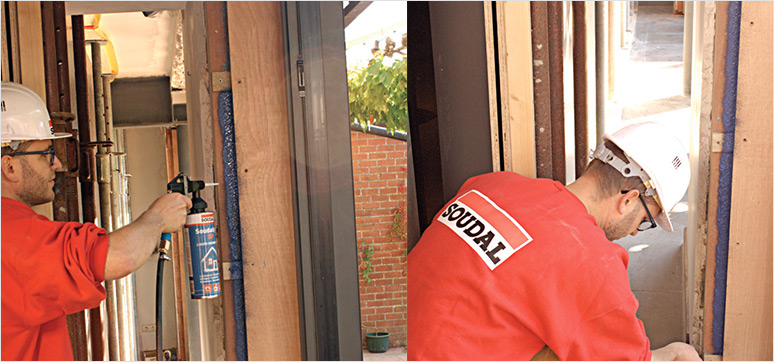
Especially construction polyurethane foams, score very well in terms of heat insulation and are very appropriate to fill the gap between the wall and the window frame right after installation of the latter. The better quality foams show better properties. Especially gun grade PU-foams are intended for professional installation jobs. The last few years saw a strong shift towards more flexible foams for window installation, as they are capable of following movement due to thermal expansion of frame material within the connection joint.
